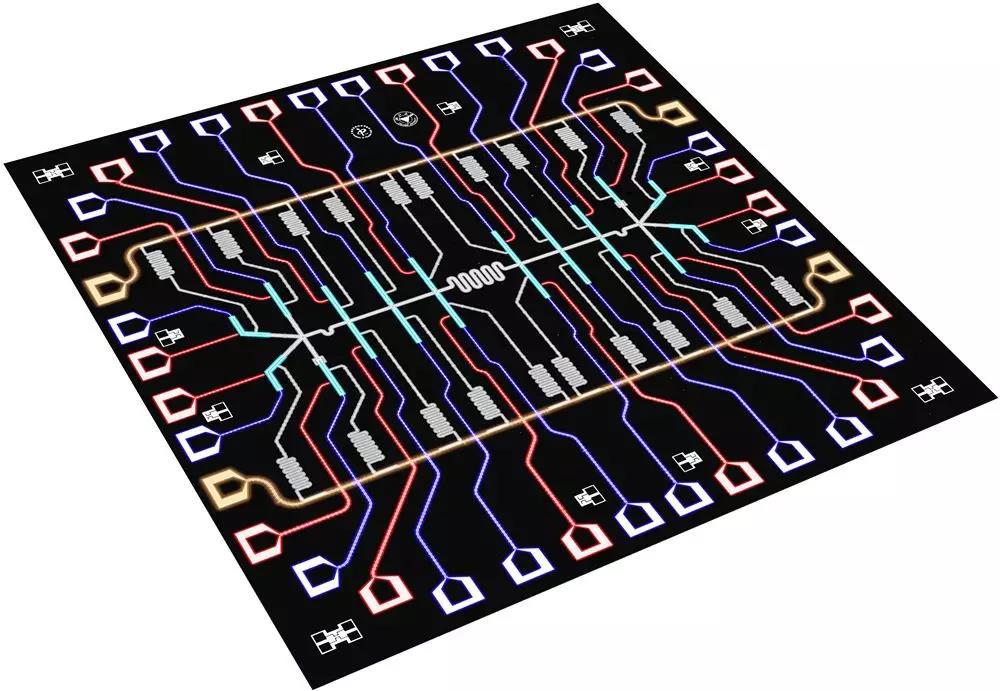Physicists have experimentally demonstrated quantum entanglement with 20 qubits on a superconducting circuit, surpassing the previous record of 12 entangled superconducting qubits.
Lead researcher WANG Haohua and co-workers at Zhejiang University, the CAS Institute of Physics, the CAS Institute of Automation and Beijing Computational Science Research Center, have published a paper on their work in a recent issue of Science.

Superconducting quantum processor with false-color circuit image showing 20 qubits (line shapes in cyan labeled clockwise from 1 to 20) interconnected by a central bus resonator B (gray).
Regular computers are based on "bits" as little switches pointing to either a 1 or a 0, to represent information. However, quantum computing relies on qubits, which can also represent a 0 or a 1. The crazy thing is that qubits can also achieve a mixed state, called a "superposition" where they are both 1 and 0 at the same time. This ambiguity-the ability to both "be" and "not be"-is key to the power of quantum computing.
The number of qubits is one of the key indicators for the performance of quantum computers. It is surmised that once the number of qubits adds up to 50, a quantum computer can surpass a supercomputer in computing while tackling specific problems. "Our chip is marked by its remarkable ability to interconnect all qubits, thereby promoting its working efficiency. This can account for the ground breaking entanglement of 20 qubits," says one of the researchers.
By engineering a one-axis twisting Hamiltonian, the system of qubits, once initialized,coherently evolves to multicomponent atomic Schrödinger cat states, that is, superpositions of atomic coherent states including the GHZ state, within merely 187 ns. This is the hallmark of the ability to entangle these qubits.

Multicomponent atomic Schrödinger cat states of 20 qubits generated during the dynamics at Δ/2π ≈ -450 MHz
Multipartite entangled states are crucial for numerous applications in quantum information science. However, the generation and verification of multipartite entanglement on fully controllable and scalable quantum platforms poses an immense challenge. With a view to building qubit-qubit couplings, thus achieving multipartite entanglement, researchers delivered this 20-qubit superconducting quantum processor.
With all-to-all connectivity and programmable qubit-qubit couplings, this 20-qubit superconducting quantum processor features represents a step toward realizing large-scale quantum computing. It also demonstrate the potential of an all-to-all connected circuit architecture for exploring profound quantum many-body physics, and also for applications in practical quantum metrology and quantum information processing.






